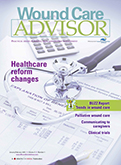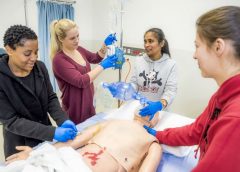Below are resources you may find helpful to your practice.
AHRQ’s Safety Program for Nursing Homes: On-Time Prevention
The Agency for Healthcare Research and Quality (AHRQ) has established “AHRQ’s Safety Program for Nursing Homes: On-Time Prevention,” designed to improve long-term care by turning daily documentation into useful information that enhances clinical care planning.
On-Time uses electronic medical records to develop weekly reports that identify residents at risk for common adverse events in nursing homes to help clinical staff intervene early. Facilitators help the team integrate these reports into clinical decision making to improve care planning.
For each adverse event, the website provides a description of the reports and suggested meetings and huddles where the reports may be used, the functional specifications for programming the reports, description of implementation tools, and a 2-day training curriculum for facilitators.
Sleep times guidelines
The National Sleep Foundation has issued new recommendations for appropriate sleep durations. Check below to see if your patients—and you—are getting enough sleep:
• newborns (0-3 months): 14-17 hours
• infants (4-11 months): 12-15 hours
• toddlers (1-2 years): 11-14 hours
• preschoolers (3-5 years): 10-13 hours
• school-age children (6-13 years): 9-11 hours
• teenagers (14-17 years): 8-10 hours
• younger adults (18-25 years): 7-9 hours
• adults (26-64 years): 7-9 hours
• older adults (65+ years): 7-8 hours.
Access “National Sleep Foundation’s sleep time duration recommendations: Methodology and results summary” in Sleep Health.
Venous ulcer resources
The website for the Association for the Advancement of Wound Care (AAWC) has several resources related to venous ulcers:
• AAWC Venous Ulcer Guideline 3.12
• AAWC Venous Ulcer Guideline Evidence 6.13
• AAWC Venous Ulcer Guideline Algorithm Presentation 8.13
• AAWC Venous Ulcer Guideline Checklist 7.13.
The resources are available at no cost.
Wound care app
The Johnson & Johnson Wound Care Resource™ App helps patients identify, track, and provide recommendations on wound care treatment.
The free app includes treatment videos and coupons to help patients save on wound care treatment supplies. The app is available for download on iTunes.




